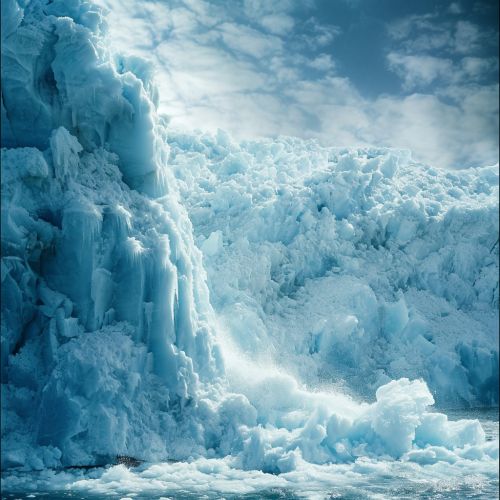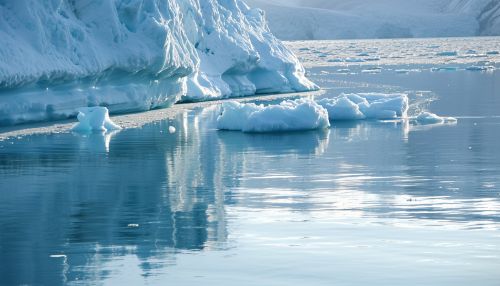Climate Change in the 21st Century
Introduction
Climate change in the 21st century refers to the alteration in average weather conditions that the planet has been experiencing, with a significant uptick in severity and frequency of extreme weather events. This phenomenon is largely attributed to human activities, particularly the burning of fossil fuels and deforestation, which increase the concentration of greenhouse gases in the Earth's atmosphere.


Causes of Climate Change
The primary cause of climate change in the 21st century is the increase in greenhouse gases in the Earth's atmosphere. These gases, which include carbon dioxide (CO2), methane (CH4), and nitrous oxide (N2O), trap heat from the sun and prevent it from escaping back into space. This process, known as the greenhouse effect, is natural and necessary for life on Earth. However, human activities have significantly amplified this effect, leading to global warming and climate change.
Greenhouse Gases
Greenhouse gases are those that can absorb and emit infrared radiation, thereby trapping and holding heat in the Earth's atmosphere. The primary greenhouse gases in the Earth's atmosphere are water vapor, carbon dioxide, methane, nitrous oxide, and ozone.
Carbon Dioxide
Carbon dioxide is the most significant greenhouse gas and is primarily released through the burning of fossil fuels for electricity, heat, and transportation. Deforestation also contributes to CO2 levels, as trees absorb CO2 as part of the photosynthesis process. When they are cut down and burned or left to decompose, the carbon they stored is released back into the atmosphere.
Methane
Methane is a potent greenhouse gas, with a global warming potential more than 25 times greater than that of carbon dioxide over a 100-year period. It is released during the production and transport of coal, oil, and natural gas. Methane is also emitted by livestock and other agricultural practices and by the decay of organic waste in landfills.
Nitrous Oxide
Nitrous oxide is released from agricultural and industrial activities, during combustion of fossil fuels and biomass, and during treatment of wastewater.
Human Activities
Human activities have significantly increased the concentration of these greenhouse gases in the atmosphere. These activities include burning fossil fuels, deforestation, and industrial processes.
Effects of Climate Change
The effects of climate change are widespread and significant, affecting all aspects of life on Earth. These effects include rising global temperatures, melting ice caps and glaciers, rising sea levels, increased frequency and severity of extreme weather events, changes in ecosystems and biodiversity, and impacts on human health and society.
Rising Global Temperatures
One of the most direct effects of climate change is the increase in global temperatures. The 21st century has seen some of the warmest years on record, with the global average temperature rising by about 0.2°C per decade.
Melting Ice Caps and Glaciers
The increase in global temperatures has led to the melting of ice caps and glaciers, particularly in the polar regions. This not only contributes to rising sea levels but also has significant impacts on local ecosystems.
Rising Sea Levels
Rising sea levels are a direct result of the melting ice caps and glaciers, as well as the expansion of seawater as it warms. This poses a significant threat to coastal communities and cities, many of which are already experiencing increased flooding.
Extreme Weather Events
Climate change has also been linked to an increase in the frequency and severity of extreme weather events, including hurricanes, droughts, heatwaves, and heavy rainfall events.
Changes in Ecosystems and Biodiversity
Climate change is also having significant impacts on ecosystems and biodiversity. Changes in temperature and precipitation patterns can alter the habitats and behavior of wildlife, leading to shifts in species distributions and potentially contributing to the extinction of some species.
Impacts on Human Health and Society
Climate change also has direct and indirect impacts on human health and society. These include increased risks of heat-related illnesses and deaths, changes in the distribution of disease-carrying vectors, impacts on food and water security, and displacement of people due to rising sea levels and extreme weather events.
Mitigation and Adaptation Strategies
In response to the threat of climate change, strategies for mitigation and adaptation are being implemented at various levels, from international agreements to local initiatives.
Mitigation
Mitigation strategies aim to reduce greenhouse gas emissions and slow down or reverse the process of climate change. These strategies include transitioning to renewable energy sources, improving energy efficiency, protecting and restoring forests, and changing agricultural practices.
Adaptation
Adaptation strategies aim to reduce the vulnerability of societies and ecosystems to the impacts of climate change. These strategies include building sea walls to protect against rising sea levels, developing drought-resistant crops, and implementing early warning systems for extreme weather events.
